Toyota Hilux review: Time-tested pickup
Toyota’s legendary pickup is for the committed adventurer.
Published on Mar 10, 2023 01:32:00 PM
31,549 Views
Follow us on
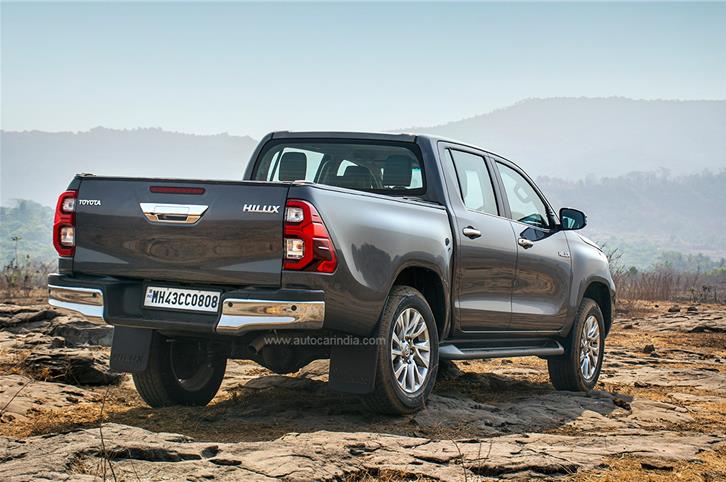
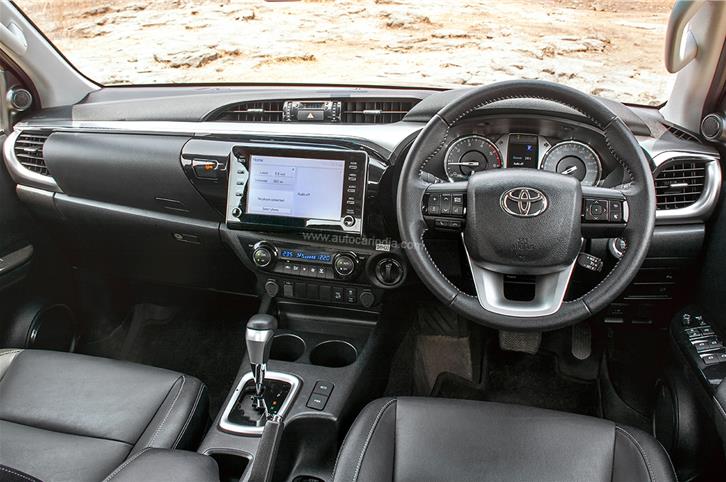
Hilux interior isn’t plush but it is practical. There’s loads of storage including two gloveboxes.
We Like
- Strong engine
- Off-road ability
- Proven reliability
We Don't Like
- Feels its size
- Bouncy ride
- Expensive
Much like the Abominable Snowman, the Toyota Hilux is something you have surely heard about but not actually seen in the flesh. We’re nearing a year since the legendary pickup went on sale in India and it’s only now that there are records of some sightings on our roads. Perhaps buyers who got their hands on one were quick to head off to the Himalayas for an adventure in search of the real Snowman.
Why is the Hilux such a big deal, you ask? In a word, indestructibility. Legend has it that a Hilux can spend a night out at sea and still make it to work the next day. Some say it’ll outlive not only you but your next generation too. It’s arguably the world’s hardiest vehicle and has been a hero across farms and warzones alike for decades. In India, it’s being marketed as a lifestyle vehicle – an option for adventurous buyers to whom a tent pitched in the great outdoors provides a more satisfying stay than the glitziest of hotels.
Toyota Hilux: price
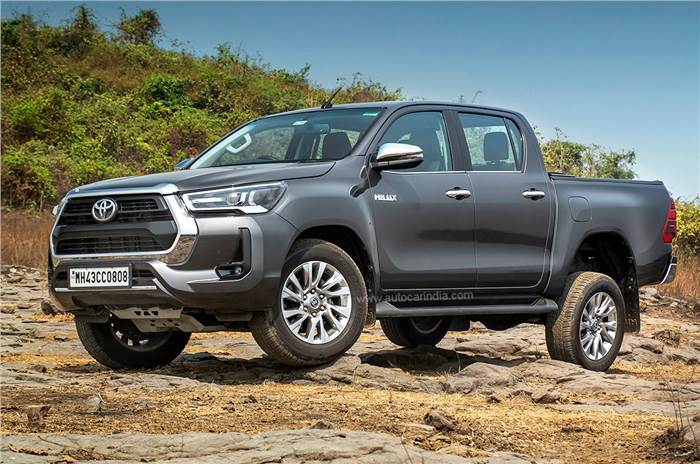 Tough as nails Hilux is in its comfort zone in the rough.
Tough as nails Hilux is in its comfort zone in the rough.
Within this introduction, it’s also important to highlight that the Hilux is the pickup derivative of the Fortuner. The ladder-frame chassis, 2.8-litre diesel engine and 4x4 hardware are shared, though the Hilux uses a different rear suspension. Pricing is in the same ballpark as entry Fortuners. The Hilux range starts at Rs 33.99 lakh (ex-showroom, Delhi), with the top-spec automatic transmission-equipped version featured here priced at Rs 36.99 lakh. Just for reference, the only other premium pickup on sale, Isuzu’s V-Cross, tops out at Rs 26 lakh.
Toyota Hilux: dimensions, design and cargo bed
First things first. The Hilux is massive. At 5.3m long, it's longer than a Mercedes S-Class and the size is only accentuated by a cabin that’s perched high off the ground. It’s imposing as is but kitted up with fatter tyres, auxiliary lights, winches and the works (as many would be), the Hilux transforms into a very serious-looking tool. For many, the Hilux’s appeal lies in just that.
 Ladder frame chassis and leaf sprung rear axle are typical pickup fare.
Ladder frame chassis and leaf sprung rear axle are typical pickup fare.
India gets the Hilux in double cab form, which is a four-door cabin with two rows of seating ahead of the large cargo bed. The Toyota-ness to the standard pickup design comes courtesy the frontal styling. The chrome-rich hexagonal grille and large headlights link the Hilux to other Toyotas, the Innova Crysta (also based on the same platform) included. There’s a whole cottage industry that’ll help you upgrade your Hilux’s look to your liking and Toyota’s own accessories menu includes items such as a canopy and tent for the cargo bed.
 Cargo bed can hold up to 470kg though the high floor makes loading materials a task.
Cargo bed can hold up to 470kg though the high floor makes loading materials a task.
Access to the cargo bed is via a fold-down tailgate whose operation is smoothened by hydraulic struts on either side. The bed is well shaped and with a 470kg load capacity can hold a whole lot of farm produce or adventure gear as the case may be. Trouble is, the bed is high set, so you’ll need a helping hand or two to get stuff up or down. The bed floor makes it easy to slide materials and it’s easy to spray wash too.
Toyota Hilux: interior
The Hilux is a tall vehicle and entry to the high-set cabin requires the use of the footstep and then the hand grip at the pillars to haul yourself up. Inside, the Hilux can’t hide its utilitarian roots and the fact is there’s nothing Rs 35 lakh about the interior. The roof lining is basic, the plastics are hard and soft-touch materials are restricted to the seats alone.
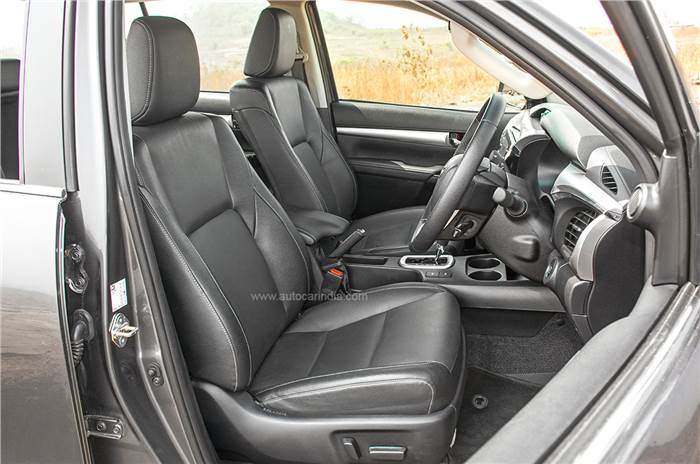 Front seats offer a commanding view. Top-spec variant gets leather upholstery and power adjust driver’s seat.
Front seats offer a commanding view. Top-spec variant gets leather upholstery and power adjust driver’s seat.
The simple dashboard won’t wow you for design either. Then again, this is a vehicle that is designed to be your home on the go and to that end, it scores well with lots of practical touches. There are bottleholders on each of the doors, fold-out cupholders at each end of the dashboard, another pair of cupholders at the base of the centre console, two usefully large gloveboxes and a box between the front seats with a handy 2-pin charging socket.
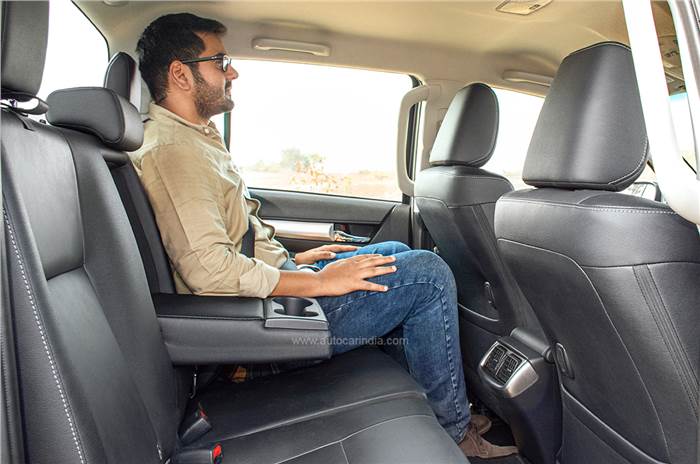 Space is adequate but cabin isn’t roomy as you’d expect. Rear passengers will also have to contend with an upright backrest.
Space is adequate but cabin isn’t roomy as you’d expect. Rear passengers will also have to contend with an upright backrest.
As you can imagine, the driving position is commanding, and as a plus, the front seats are also very comfortable. Those seated at the back don’t have it quite as nice. For one, legroom is just adequate; that massive 3,085mm wheelbase has clearly been used to maximise cargo room, not passenger room.
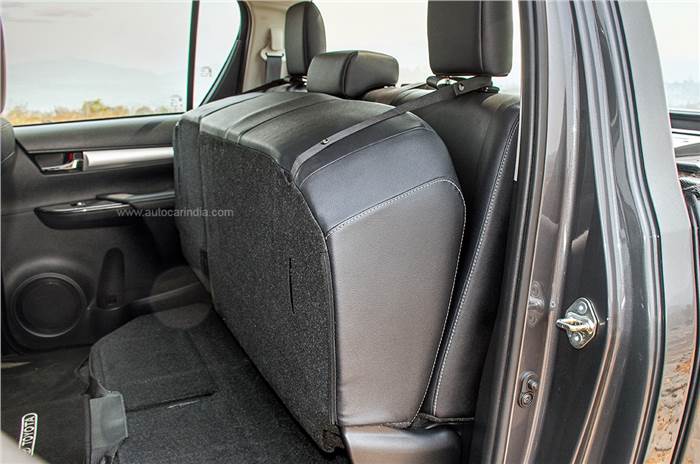 When not in use, rear seat base can be lifted to make more storage space inside.
When not in use, rear seat base can be lifted to make more storage space inside.
The seating position is also knees up and what doesn’t help matters is the upright rear backrest – a quirk on most pickups. The rear seats do come built-in with some added practicality. When not in use, the seat base can be made to stand upright to free up sizable luggage space within the cabin.
Toyota Hilux: features
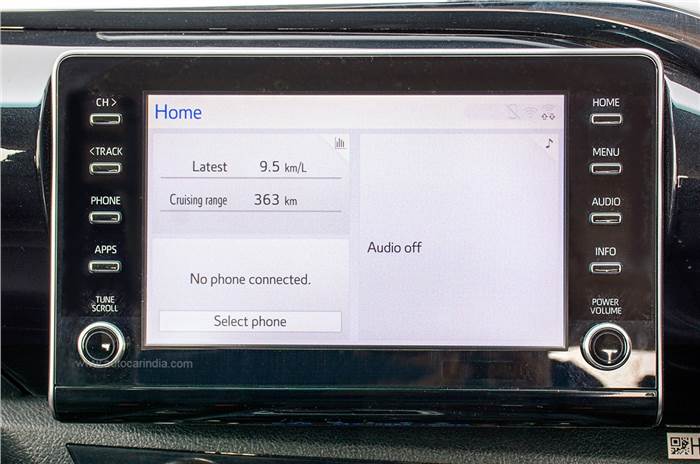 8-inch touchscreen gets the job done and packs in Android Auto/Apple CarPlay.
8-inch touchscreen gets the job done and packs in Android Auto/Apple CarPlay.
The Hilux is offered in two trims, and features standard across the range include keyless entry and go, cruise control, a simple 8-inch touchscreen but with Apple CarPlay and Android Auto, rear air-con vents, front and rear parking sensors and a reverse camera. The High trim, identifiable on the outside by chrome embellishments, adds in LED headlights, auto climate control, leather upholstery and a powered driver’s seat adjust. The feature list isn’t long per se, but there are enough niceties to make life with a Hilux comfy.
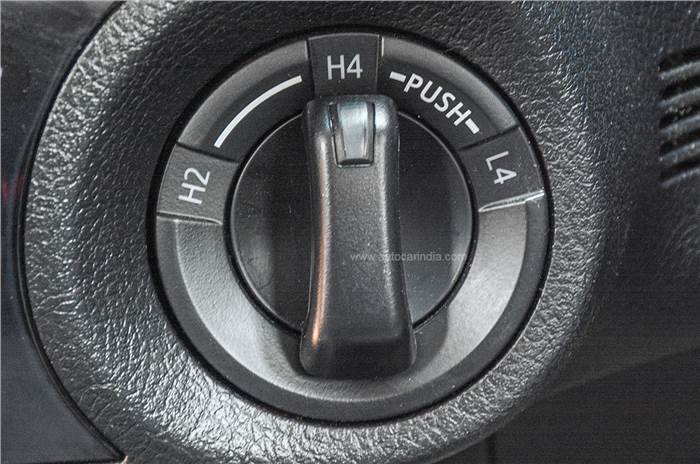 Four-wheel drive with low range is standard and gives the Hilux tremendous capability.
Four-wheel drive with low range is standard and gives the Hilux tremendous capability.
In terms of capability, all versions of the Hilux are made equal. Four-wheel drive with low range (operated via a dial), an electronic differential lock for the rear axle and hill descent control are standard fit. Safety kit includes seven airbags, electronic stability control, hill start assist and ISOFIX child seat mounts.
Toyota Hilux: performance
The Hilux shares its diesel engine with the Fortuner. That’s a 204hp, 2.8-litre diesel that makes 420Nm with the 6-speed manual and 500Nm with the 6-speed auto. The power figures translate on to the road because the Hilux feels strong. It gets to speed reasonably quick and there’s always that feeling of more power in reserve.
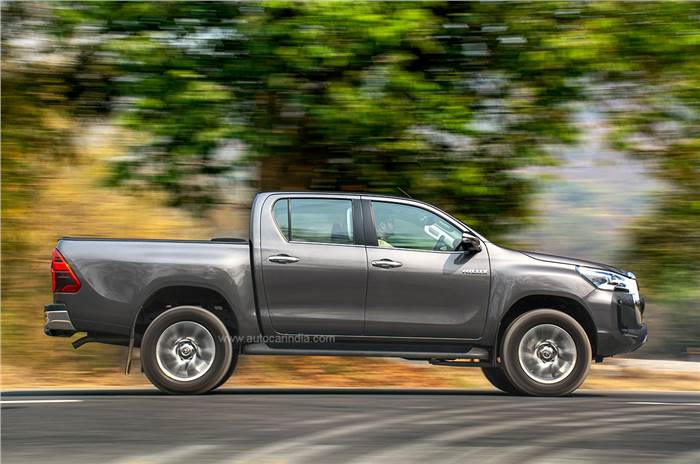 500Nm diesel engine is strong and makes the XL-sized Hilux feel light on its feet.
500Nm diesel engine is strong and makes the XL-sized Hilux feel light on its feet.
We didn’t put the 470kg load capacity and its impact on performance to the test, but signs indicate that pulling power won’t be an issue. The engine does get loud when rushed, but noise levels are well within acceptable limits for a pickup. The 6-speed automatic gearbox also does well. Shifts are smooth and it’s satisfyingly alert in Sport mode and responsive to manual inputs at the gear lever. Before you ask, no paddleshifters here.
Toyota Hilux: ride and handling
The Hilux doesn’t do city life well. It feels its size in town, the heavy steering requires effort to twirl and the massive turning radius means you’ll inevitably be holding up traffic at U-turns. The parking sensors and rear camera do remove some guesswork while placing it, but all the best finding a parking space large enough to accommodate your Hilux.
On the plus side, the Hilux’s size and weight give great confidence at higher speeds. It’s not agile, of course, but turns smoothly enough. The steering does require minute corrections over long, winding corners.
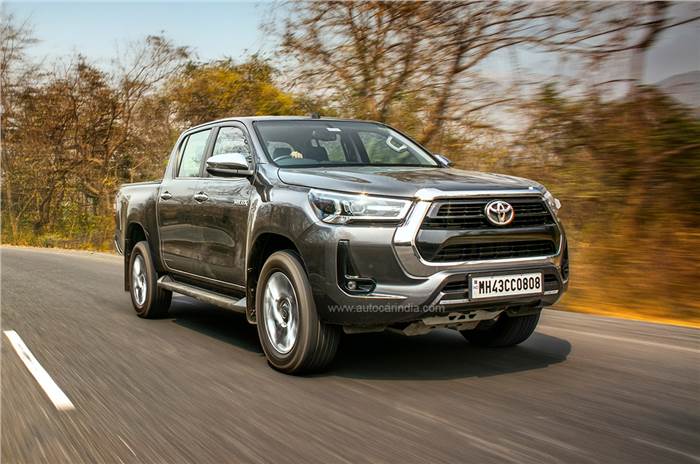 General feeling of heft gives confidence at high speeds.
General feeling of heft gives confidence at high speeds.
Ride comfort is a function of how loaded the Hilux is. Without any added weight over the rear, the rear leaf springs deliver a bouncy ride that pick up the minutest of surface imperfections. It hops, skips and jumps and your rear passengers, in particular, will feel the brunt. Then again, the Hilux cushions the blow of big potholes taken at speed better than most other SUVs.
It’s when you leave the road behind that the Hilux comes into its own. It feels built to take a beating from its very core and allows you to maintain the pace where typical SUVs would require you to greatly scale back. You’ll be rattled, not your Hilux.
.jpg&c=0&w=700) Without any load at the back, the Hilux feels bouncy and actually amplifies surface imperfections.
Without any load at the back, the Hilux feels bouncy and actually amplifies surface imperfections.
In the rough, the chunky 265/60 R18 tyres are a good first line of defence and when conditions deteriorate, a twist of the 4WD knob unlocks new ability. The Hilux brushed off the medium-level rock-laden path we attempted with absolute ease. Ground clearance (Toyota hasn’t given a number) is ample and we weren’t limited by the long wheelbase and XL-sized rear overhang in the rocky setting. We will be putting the Hilux through more serious stuff soon so stay tuned to see how the Hilux fares. But it’s safe to assume, all that a Fortuner can do, a Hilux can too. And that’s a lot.
Toyota Hilux: verdict
Lifestyle pickup trucks are all about adventure and travel, and to that end, the Hilux scores big. It’ll take you to places few SUVs can, and there’s comfort in knowing that everything will work as it’s supposed to even in the most adverse conditions.
Thing is, you have to be honest about how much of the Hilux’s skillset is of actual use to you. It’s a committed choice, in that sense, because it requires you to live with a bumpy ride, heavy steering and a relative lack of frills. The sheer size of the thing can also be a pain point in town. So, see the Hilux in light of a like-priced SUV before taking the plunge.
If the pros outweigh the cons, and if you’re specifically looking for a tool to take you off the map, the Hilux could be all the vehicle you need.
Also see:
Tech Specs 
Copyright (c) Autocar India. All rights reserved.


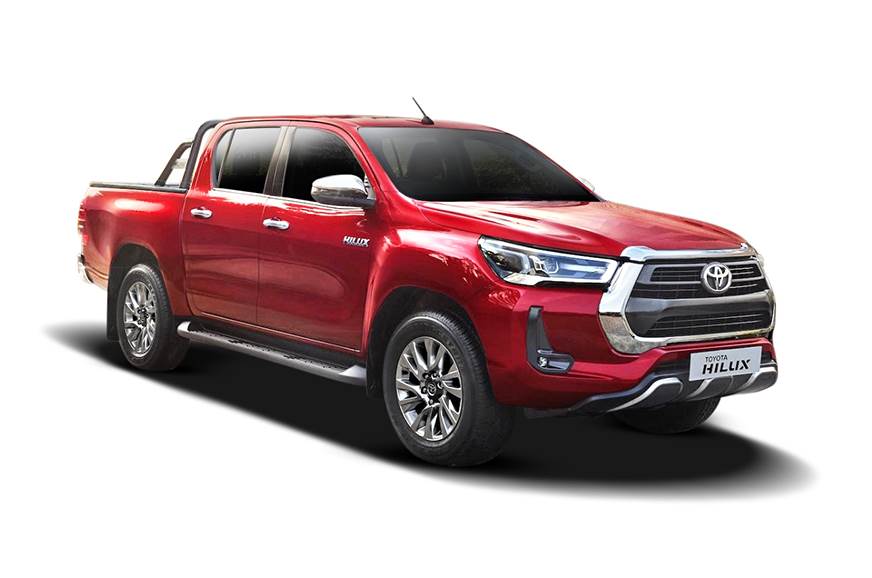




 Price
Price Engine
Engine Transmission
Transmission Efficiency
Efficiency Body
Body Suspension
Suspension Steering
Steering Brakes
Brakes Dimensions
Dimensions
Comments
Member Login
Personal Details
No comments yet. Be the first to comment.